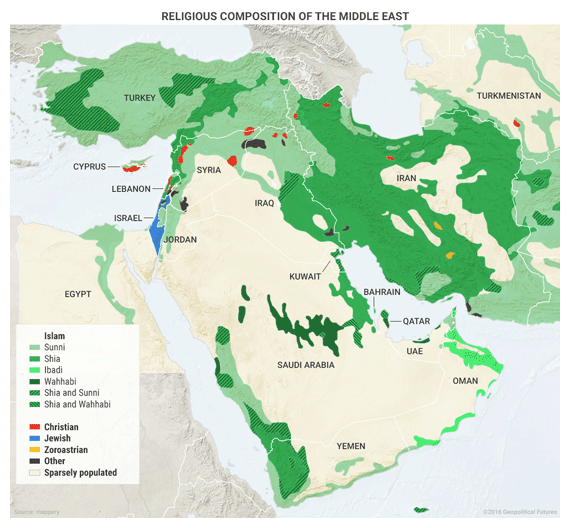The first map above shows some of the Middle East’s topography. The northern region is mountainous, while the southern area is generally lowlands. The south is mainly populated by Arabs, save for Israel. The higher elevations of Turkey and Iran are non-Arab.
Typically, mountainous terrain is less populated than lowlands due to factors like ease of making a living. Not so in the Middle East… since much of the lowlands lack water and offer a rather inhospitable quality of life.
Overall, the population is concentrated in the mountains of Iran, Iraq, and Turkey. Secondary concentrations are found on the eastern Mediterranean coast and the southwestern and southeastern Arabian Peninsula.

Religious divisions are particularly important, notably the division between Sunnis and Shiites. Also note the intermingling of Christians and Jews.
In our view, conflicts begin with geography, as communities strive for security within their geography. Some people achieve security in remote mountain valleys. Others, like the Israelis, are always insecure, caught on the lowlands without any natural barriers.
But an understanding of these many religious factions is not enough, as religious diversity is complicated by an array of ethnic subgroups.

The Kurds are largely Sunni Muslims. They are hostile to Arab Sunnis and Shiites.
The Druze are neither Muslim nor Christian, but can find themselves allied with either. The Druze who live in Israel are allied with Israel.
The complexity of ethnic groups is partly due to the nature of mountainous regions, but also to the policy of the Ottomans. The Ottomans dominated this region for centuries. But unlike Muslim and Christian conquerors, they didn't pursue religious uniformity through forced conversion as long as the populace pledged their allegiance to the Ottomans.








